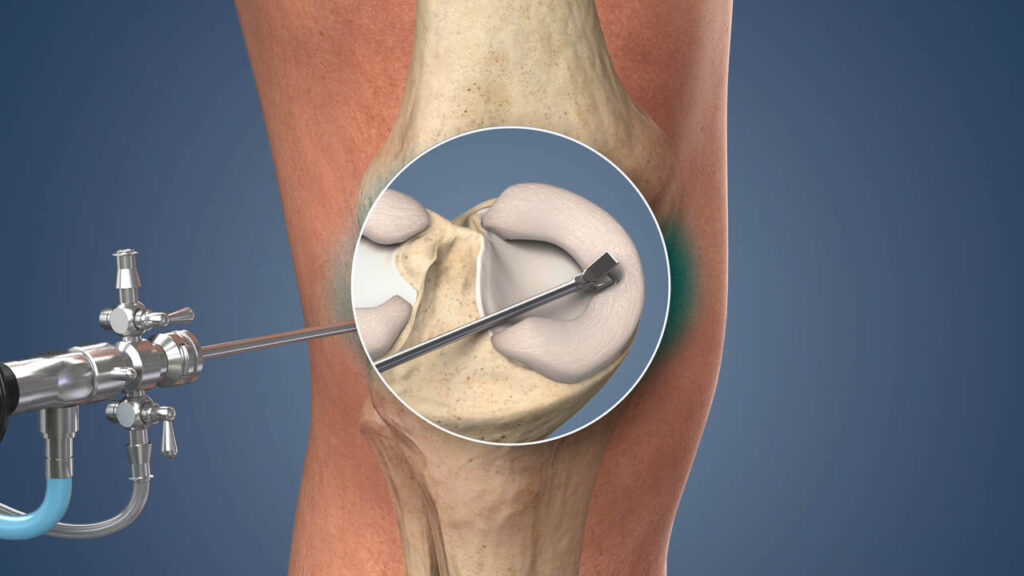Restoring Knee Function & Mobility
The meniscus is a crescent-shaped cartilage in the knee that acts as a cushion between the thigh bone and shin bone. A meniscus tear is a common knee injury, often caused by sudden twisting, pivoting, or direct impact. This can result in pain, swelling, and restricted knee movement.
Meniscus repair is a surgical procedure aimed at restoring the damaged cartilage to improve knee stability and function. Depending on the severity and location of the tear, treatment options may include repair, trimming (meniscectomy), or replacement.
Causes & Risk Factors of Meniscus Tears
- Sports & High-Impact Activities – Common in football, basketball, and skiing.
- Sudden Twisting & Pivoting Movements – Puts strain on the meniscus, leading to tears.
- Aging & Degeneration – Wear and tear over time can make the meniscus prone to injury.
- Direct Trauma to the Knee – A hard fall or collision can result in a tear.
- Improper Footwear & Poor Conditioning – Increases stress on the knee joint.
Signs & Symptoms of a Meniscus Tear
- Pain and tenderness along the knee joint
- Swelling and stiffness, especially after activity
- A popping sensation at the time of injury
- Locking or catching of the knee
- Difficulty bending or straightening the leg
Diagnosis of Meniscus Tears
- Physical Examination – Assessing knee stability and range of motion.
- MRI Scans – Provides detailed imaging to confirm the tear.
- X-rays – Used to rule out fractures or arthritis-related changes.
Treatment Options for Meniscus Tears
Non-Surgical Treatment (For Minor Tears)
- Rest & Activity Modification – Reducing stress on the knee for natural healing.
- Bracing & Support – Providing stability and protection.
- Physiotherapy & Strengthening Exercises – Enhances knee function and prevents further injury.
- Pain Management – Anti-inflammatory medication and ice therapy.
Surgical Treatment (For Severe Tears)
- Meniscus Repair – Stitching the torn cartilage together to promote healing.
- Partial Meniscectomy – Removing the damaged portion while preserving as much of the meniscus as possible.
- Meniscus Transplantation – For cases where the meniscus is severely damaged or missing.
- Minimally Invasive Arthroscopy – A keyhole procedure to repair or remove the damaged tissue.
Recovery & Rehabilitation After Meniscus Repair
- Initial Recovery Phase (0-6 Weeks) – Pain management, knee bracing, and limited weight-bearing.
- Strengthening Phase (6-12 Weeks) – Gradual return to mobility and low-impact activities.
- Rehabilitation (3-6 Months) – Focused physiotherapy for strength, balance, and agility.
- Return to Sports (6+ Months) – A structured progression back to high-impact activities.
Why Choose Advanced Orthopaedics for Meniscus Repair?
Specialist Knee Care
Led by Dr Sarbjit Singh, a Senior Consultant Orthopaedic Surgeon, our clinic provides meniscus repair with personalised treatment plans.
Comprehensive Rehabilitation Programs
Our structured recovery approach ensures optimal healing, knee strength restoration, and injury prevention.
Modern Surgical Techniques
We utilise minimally invasive arthroscopic surgery and the latest meniscus preservation techniques for better long-term outcomes.
Take the Next Step
If you have suffered a meniscus injury and want to regain full knee function, early treatment is essential. Schedule a consultation with our team at Advanced Orthopaedics to explore the best treatment options for your recovery.





